-
Posts
919 -
Joined
-
Last visited
-
Days Won
255
Content Type
Profiles
Forums
Gallery
Events
Articles
Blogs
Downloads
Community Map
Posts posted by DianeB
-
-
Hello, @Abe, and welcome to our forum. I saw your post in the new members section. Take some time to explore.
Some background: the Guitar Gathering discussion board has existed as you see it for six and a half years. For about six years prior, going back to around 2012, it was operated as an adjunct to the Legacy Systems Learn and Master Guitar DVD Course which Steve Krenz created. Legacy also produced courses in piano, drums, and photography, but none of their online forums were as active as the one for guitar. DVDs were still popular at that time, and many of the early Learn and Master students, like myself, brought our questions and were rewarded with good advice and a delightful sense of community.
By 2017, changes started taking their toll. Physical media plummeted in popularity as streaming took off. With DVD sales dropping, Legacy did not produce more courses. Steve's guitar course was a work for hire, so he did not own the rights to reuse the video and repurpose it for streaming. He needed to find his own niche.
With no new students to keep it fresh, and no IT support from Legacy, the discussion board lost its vitality. Trolls and spammers started to infect it.
But in its decline, hope emerged when one of our members proposed a weekend in Nashville just to meet, play together, and see the town. Steve noticed. He hurriedly arranged a meeting place, assembled some plans, and his annual conference — which had lost its sponsor, Gibson — was revived in 2015. There were 18 of us. The next year, about 70.
Steve found a new service provider for a discussion board, and we migrated as much old content here as we could. He branded his new enterprise as Guitar Gathering. The annual summer conferences in Nashville have continued until this year, when Steve took a break to contemplate a new venue. He also produces the Fall Fingerstyle Retreats (this year's is sold out).
As you may have noticed, he also streams a live lesson about every other Tuesday night, depending on his schedule. He's a busy guy, but the discussion board and the Tuesday night lessons are free. We're here to learn, share, and support one another.
Participation on the forum has cooled somewhat since the first two years. There are multiple reasons, I think: the original cohort found what it needed and has largely moved on. Very few people these days seem inclined to take the time to construct complete sentences (like yours and mine), preferring instead to communicate in emojis, text-speak, and videos. That's where we are now.
So, welcome again, from an old school, old timer. Make yourself at home!
-
 1
1
-
 3
3
-
-
I'm not sure I understand your question. What matters is whether what you're learning is helpful to you. Of course, learning all the notes on the fretboard is a valuable skill — in general — but even that is not necessary for playing satisfying music for yourself or with others. By the way, jams come in many variations. You might have to visit several before finding one that suits your taste. I wish you good hunting.
-
@randomguy Here's just a handful of what turned up.
-
The answer key to the lesson book is here.
-
 1
1
-
 1
1
-
-
One more, this one from the Newark (Delaware) Arts Alliance open mic last month. A nice audience of about twenty. Probably as good a profile picture as I'll get.
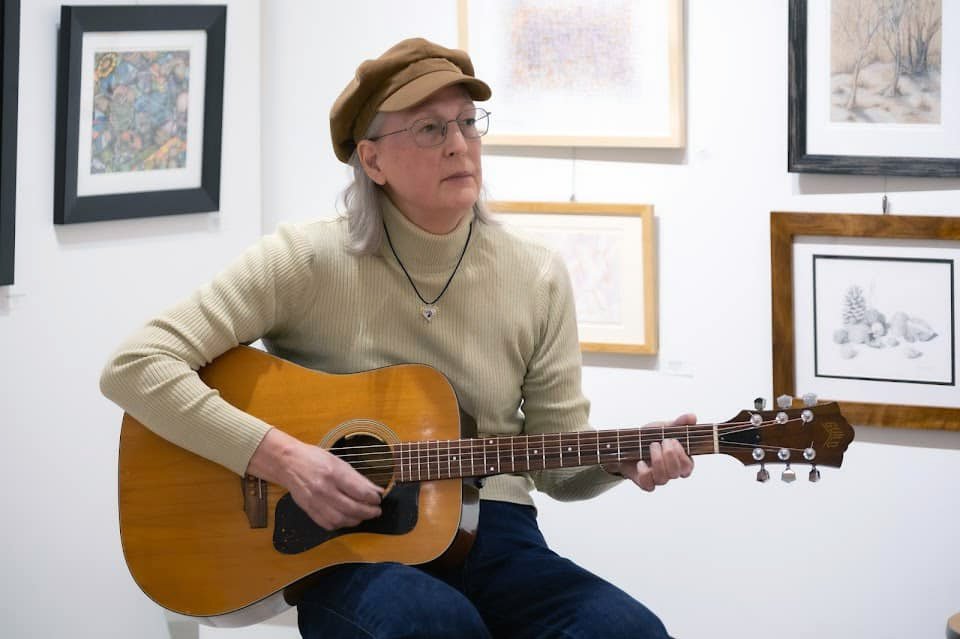
-
 3
3
-
-
In Pat's upcoming release "MoonDial" (July 26, 2024), we'll hear Linda Manzer's new baritone guitar with nylon strings. Of course, it's not conventionally tuned, either. That's Pat. The man is always exploring.
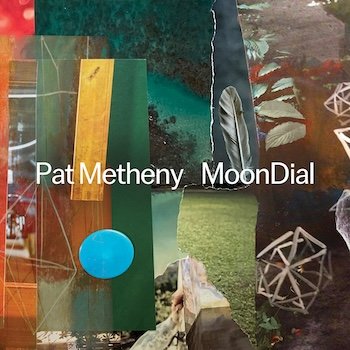
-
 2
2
-
-
-
And the Oscar goes to ,,, !
-
Last night, my (well-obscured) guitar partner Dave and I played an 11-song acoustic set at an open mic in Elkton, MD, to an appreciative room of patrons. We opened with "Old Time Rock and Roll" and closed with "Long May You Run," more or less taking turns with vocals and solos. There were a couple of hiccups, but we had our moments, too.
-
 9
9
-
-
Just by chance, last night I came across a stunning documentary on ABC: “The Last Repair Shop”. As the closing credits rolled on screen, tears rolled down my cheeks. The redemptive power of music has rarely been so eloquently documented. It's justifiably nominated for an Oscar for Best Documentary Short Film. Available on Hulu, Disney+ and YouTube. 40 minutes.
-
 1
1
-
-
From The Guardian:
A Höfner bass guitar bought by Paul McCartney for £30 in 1961 has been returned to the former Beatle after a global search to find the stolen instrument.
The distinctively shaped guitar, bought by McCartney before his rise to stardom and reportedly his favourite, was last seen around the time the Beatles were recording their final album to be released, Let It Be.
McCartney paid £30 for the bass guitar 63 years ago, equivalent to about £800 at today’s prices.
A search to find the missing violin-shaped bass, a German-made Höfner 500/1, was launched by the Lost Bass Project last year, and on Tuesday a student, Ruaidhri Guest, shared a photograph on social media of the elusive instrument…
-
 1
1
-
-
@Nancy Lawing That's a good question for Steve on the Live Lesson, Nancy. By now he's probably the only one with any video from the Ustream, or earlier, eras. The old link has long been broken, as IBM acquired Ustream years ago. But I managed to snag a screen shot from (I think) October 8, 2013. I had been watching for just a few months, the late Pete Huttlinger was his guest, and Steve picked me to win one of Pete's video courses. Pete said, "Way to go, Diane," and you know the rest of the story.
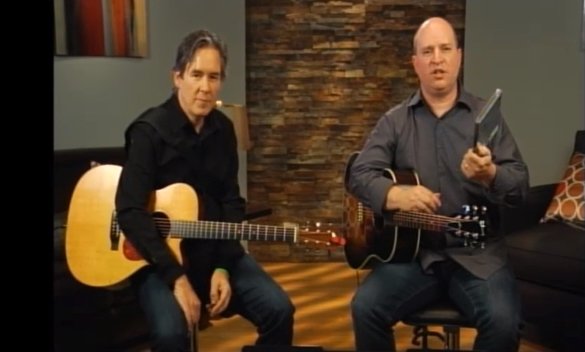
-
 3
3
-
-
Here's a 60 year flashback to the cusp of the British invasion. The Beatles' debut on The Ed Sullivan Show would be February 9. Each week, WGH, the principal AM station in the Tidewater, Virginia market, placed a stack of these wherever records were sold. The station DJs, of which there were about a half dozen, took turns choosing a newly released single they thought promising, the "Wax to Watch". I collected them from 1963–1965, asking my dad to steer us to a store where I could pick up the latest copy when we were out on errands.
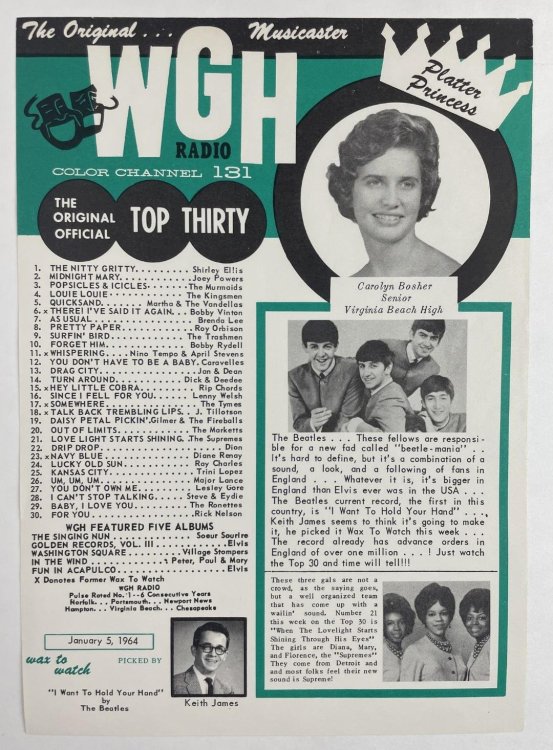
-
 2
2
-
-
Seems like something from "Brain Salad Surgery" would have been appropriate: https://www.theguardian.com/us-news/2024/jan/22/florida-man-play-guitar-brain-surgery
A video report from CNN: https://www.cnn.com/videos/us/2024/01/23/man-plays-guitar-during-brain-surgery-tumor-affil-cprog-vpx.wsvn
-
 1
1
-
-
I've been wondering about her! From Vulture and New York magazine, this link might be active only a short time. She has a brief Wikipedia entry.
Back in October 2020, months after Diondre Cole dared to inquire “What up with that?” to viewers at home, a pink guitar beckoned from the stage as Saturday Night Live returned to its normal studio programming. There, just off to the right and in the back of the opening monologue frame, was guitarist Maddie Rice making her debut as part of the show’s live band. Young, hip, and barely 30 years old at the time, the newest addition of the Saturday Night Live Band was notable for a few reasons….
-
 4
4
-
-
 Watch Live Lessons on the Guitar Gathering YouTube Channel HERE. 7:00 pm Central Time US
Watch Live Lessons on the Guitar Gathering YouTube Channel HERE. 7:00 pm Central Time US
2024 LIVE LESSON DATES
JANUARY
2nd – How to Make 2024 the Best Guitar Year Yet
9th – The Chords You Really Need to Know on Guitar
16th - Strum Like a Pro
FEBRUARY
6th – Creating Fills Between Chords
13th - From Real Book to Solo Fingerstyle Arrangement
20th – Guitar Progress Q & A
MARCH
5th - How to Choose Your Next Guitar
26th - The Belmont Guitar Ensemble
APRIL
2nd - Playing Sixths on Guitar
16th - Playing Sixths on Guitar Workout
23rd - Trevor Gordon Hall
30th - The Top 7 Finger Patterns
MAY
7th - Collin Hill
21st - Songwriter Allen Shamblin
28th - Fingerstyle Patterns Workout
JUNE
5th - (Special Wednesday night program) Tommy Emmanuel
18th - Cascading Patterns on Guitar
JULY
2nd - Make Chords Shimmer: Soulful Guitar Techniques
23rd - Freddie Green Jazz Chord Voicings
AUGUST
13th - Developing a Jazz Feel
27th - Make One Chord Sound Like 10!
SEPTEMBER
17th - Where Do I Put My Capo?
OCTOBER
1st - Play This, Not That
8th - Workout: Play This, Not That
29th - Oh, the Wonderful Things You Can Do With Loopers
NOVEMBER
12th - The Belmont Guitar Ensemble
19th - Ian Ethan Case
26th - Improve Your Groove
DECEMBER
10th - Song Arranging for Guitar
17th - Song Arranging for Guitar, Part 2
JANUARY 2025
14th - To be announced
Future dates and topics to be announced.
-
While reading about alternate tunings I was saddened to learn that musician George Winston died this summer, on June 4, 2023. He is best known for his solo piano compositions that helped define New Age music — although he preferred to describe his style as “rural folk piano”. He also played harmonica and acoustic guitar. I discovered George in the eighties and was fortunate to have a front row seat to see him perform in 2018. He was frail from his battle with multiple cancers, so I remember a poignant, graceful performance.
-
 1
1
-
 1
1
-
-
Update: It's a real treat: even better than its predecessor because the time frame is more recent with better footage, it has fewer subjects, and they're all still pals. Delightful interviews with Russ, Leland, Waddy, Danny, and a number of the artists they worked with.
-
Keep watch in your area for "Immediate Family," Denny Tedesco's follow up to "The Wrecking Crew". Now in limited screenings, it goes into general release December 15. Or watch at home. Waddy, Kooch, and the gang finally have their moment center stage.
-
 2
2
-
 2
2
-
-
@Cuong Dang Hello, and welcome to the forum. There are several guitar courses available from Udemy, but if it is using the Learn and Master course materials, it might be doing so without authorization and illegally. We have witnessed a prior instance of this, and Legacy quickly had the course removed. It's possible that since that time, Legacy has authorized such use to someone, but you should verify that so you are not contributing to the practice.
Although Steve does not list the Blues or Fingerstyle courses in his store at this time, it's possible that he might still have a copy. You can ask by e-mailing him at: service[at]guitargathering.com. There is little demand for physical media these days, and the last I heard was that, as you report, Legacy has sold out of some courses.
-
The file downloads fine for me.
-
@AllThumbs Hello, and welcome to the discussion board! We should begin by noting that two editions of the Learn and Master Guitar course were published. One, the less expensive version distributed through retailers, does not contain the Bonus Resources book. This volume, still available separately from Steve, details the criteria, including bpm, for "You're Ready to Move On" after each lesson. If your copy of the course did not contain this, I strongly encourage you to obtain it.
The Lesson book only describes the tracks on the jam along CDs as either slow, medium, or fast, as you describe. These terms are arbitrary and have no fixed meanings. One of our devoted students measured the tempos to each of these tracks some time ago and collected the results; I have attached a PDF that tabulates them all.
If you would like to acquaint yourself with the terminology of tempo, this Wikipedia article is a good start. The traditional terms are not often encountered in guitar music outside classical and jazz genres.
-
 1
1
-
-
Hi, Jeff, and welcome to the discussion board. In the settings you describe, I suggest that your intro take into account factors such as where that song comes in the set (do you want a dramatic finish), the level of background noise from the audience (single notes might get lost), and how familiar the audience might be with the song (will they expect a certain lick).
Some common tricks are to strum over the opening chord during a narration; open with the last four bars of the chorus (if it starts with the verse), or the first bar, or first few bars of the first verse.
A good intro should blend well with the song and hint at what's to follow, so consider where the verse starts in the progression: on the I? the IV? the vi? Let your ear be your guide. If it pleases you, it will likely please your audience. I'm sure our gang will have other suggestions.
-
 1
1
-
-
Good to hear from you, Six! Don't be a stranger.

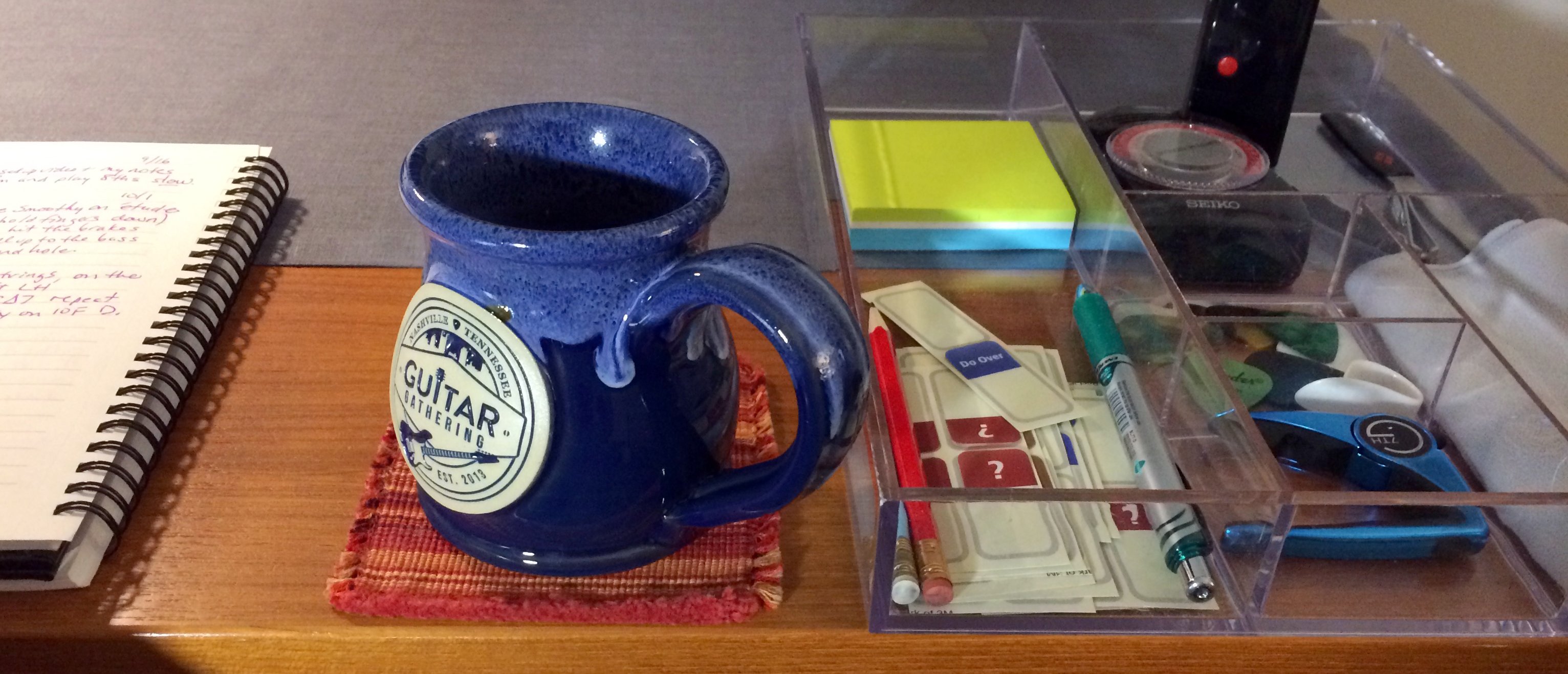
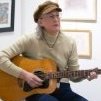
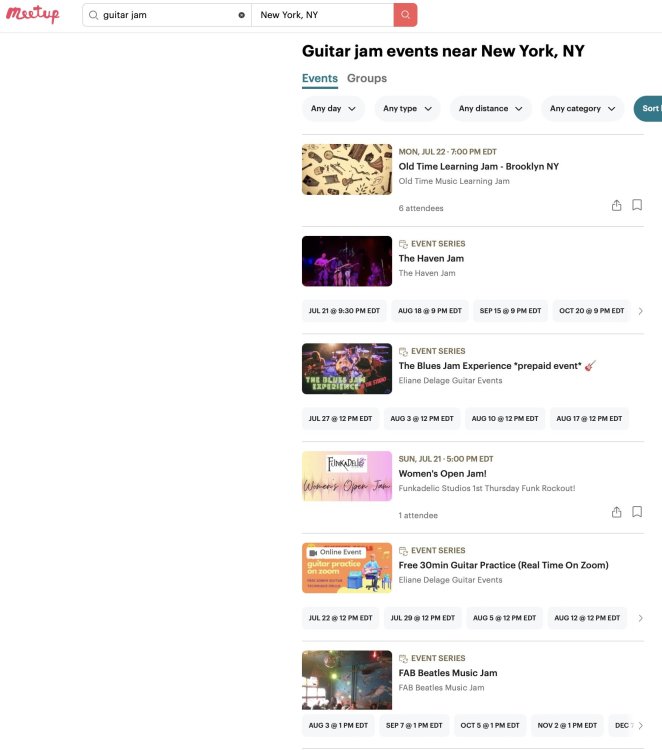
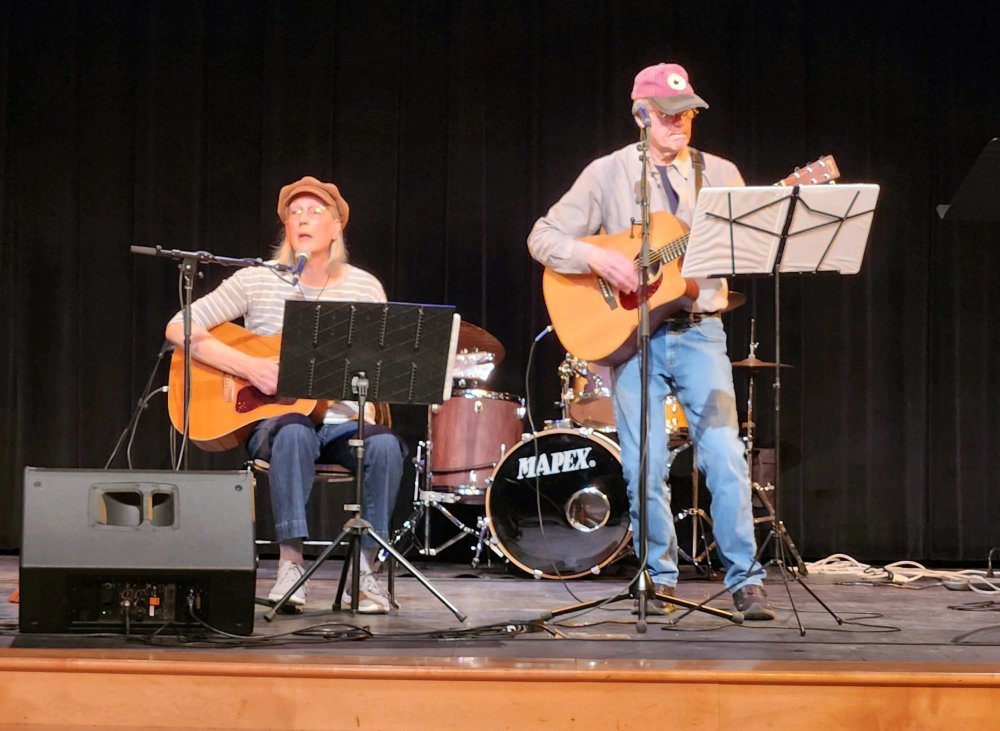
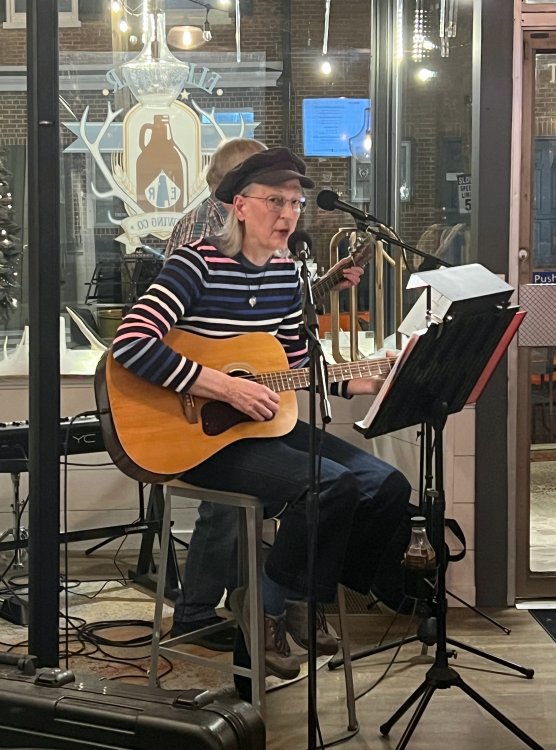
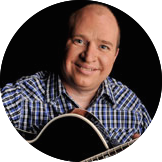
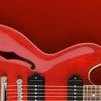
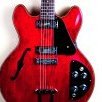
A post for 2024
in Guitar Gear, Amps, Effects, Pedals
Posted
I know, Six, it’s so quiet. See my reply to Abe yesterday. There was no Gathering this summer, so we’re missing that, too. But you might be hearing from me a bit next week, hint, hint.